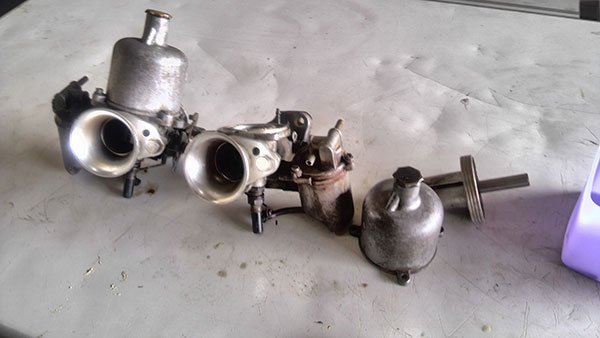A simple carburetor problem
 Atty. Jerome G. Neri
Atty. Jerome G. Neri
The Scrutineer
A 1960 something MGB was brought to my shop a week ago. The owner just wanted me to go over the car, a new acquisition, and get the engine running well. The car had no major problems and in fact is in very good shape for its age. The engine was running rough and clearly was not putting out the power that it should. After going over the engine, it was clear to me that the engine was in good mechanical shape and the problem was in the fuel, ignition or both. In other words, it was a good engine that was out of tune. It is not surprising for an old car that is rarely used to have this problem.
A logical and methodical approach is needed in order to bring this engine back to running right. The first order of business in cases like this is to give a good visual inspection of every ignition and fuel related components. Hence, I checked the ignition coil, distributor, high tension wires and spark plugs. What was obvious to me on the ignition side was that the high-tension wires looked beat up and corroded and therefore had to be replaced with new ones. On the fuel side, the gasoline tank was inspected, and I found it to be very dirty, which meant that the gasoline tank had to be removed and completely cleaned together with the entire fuel system.

With new high-tension wires and a completely cleaned fuel system I fired up the old MGB and the car was still running rough and struggling to rev past 4500 rpm. It was clear to me that not enough fuel was being drawn to the engine and was, therefore, a carburetor problem. This got me worried, as the MGB comes with twin sidedraft SU carburetors. These are carburetors that I am completely unfamiliar with. A long time ago a friend of mine told me this was a very difficult carb to understand. I asked my mechanics here at the shop if any of them are familiar with the SU carburetors and those who claimed to be familiar said it would be better off replacing it with another carb as the SU carb is one big headache.
I don’t think it would be correct for me to tell my customer that his carburetor needs replacement because it is one big headache, I had to find the problem so I can exactly tell him what is wrong with his carb, so I consulted my know-it-all friend, Google.
To my surprise, the SU carburetor is one of the simplest carburetors with only four, yes, four moving parts. It only has one jet to meter the gasoline, unlike other carbs that have an idle jet, an accelerator pump jet and main jet. This one jet is a variable jet with a tapered needle in the middle. This tapered needle is attached to a piston. It is the movement of this piston that controls the amount of fuel delivered depending on engine demand, as the piston rises, the more fuel is delivered.
After getting a thorough understanding of the SU carburetor, I decided to rebuild it as it was just a matter of cleaning, sealing and setting it properly. I installed the SU carb back to the MGB and fired the car up, did some final adjustments and fine tuning and I had a nice and sweet running engine.
SU type carburetors are seen in many different cars, from old Mercedes-Benzes to old Hondas. A lot of cars that have been fitted with SU or SU type carbs have aftermarket conversion kits, and these kits are mainly being sold for high-performance improvements and not because the SU carb or SU type carbs are a pain in the butt. On the contrary, I found these carbs simple and easy to maintain. Some mechanics have a beef with these carbs because it is different from most. I am glad that I took time to study the SU carb as I have learned something new.



